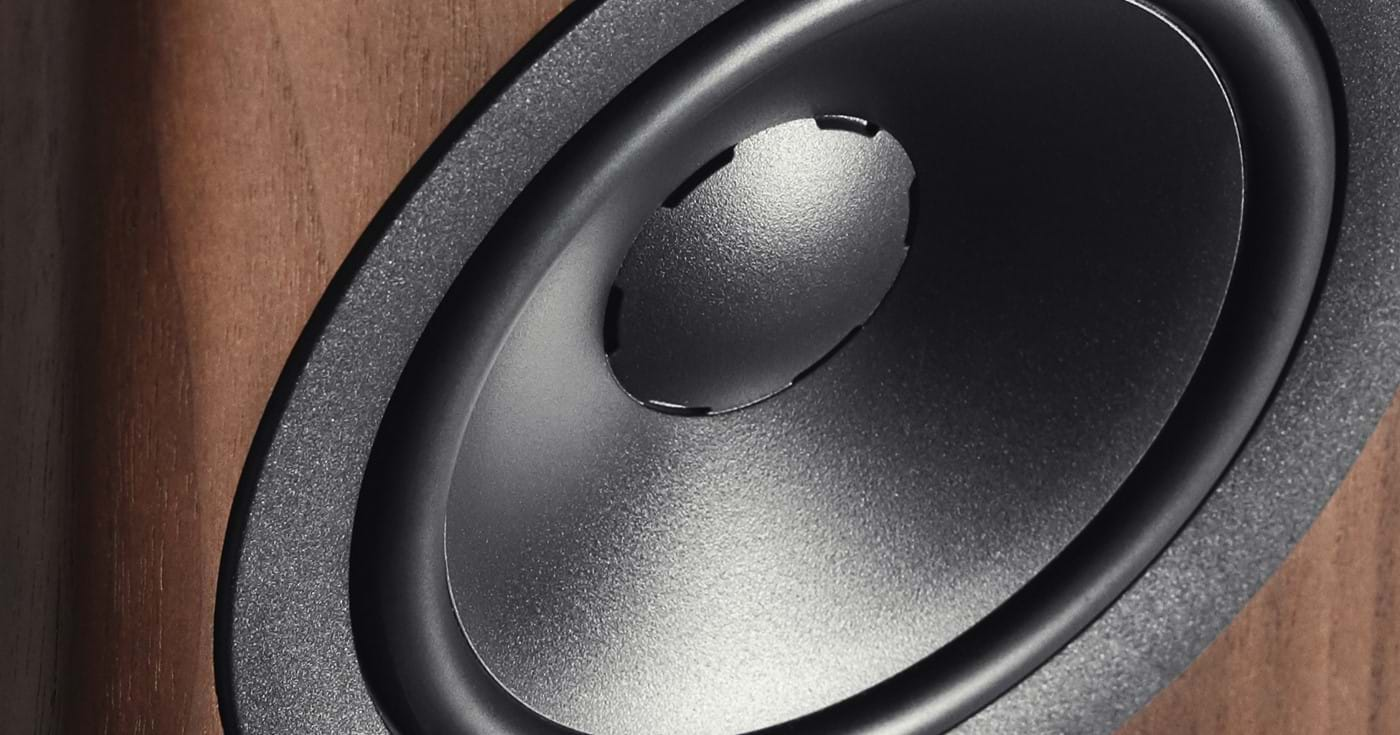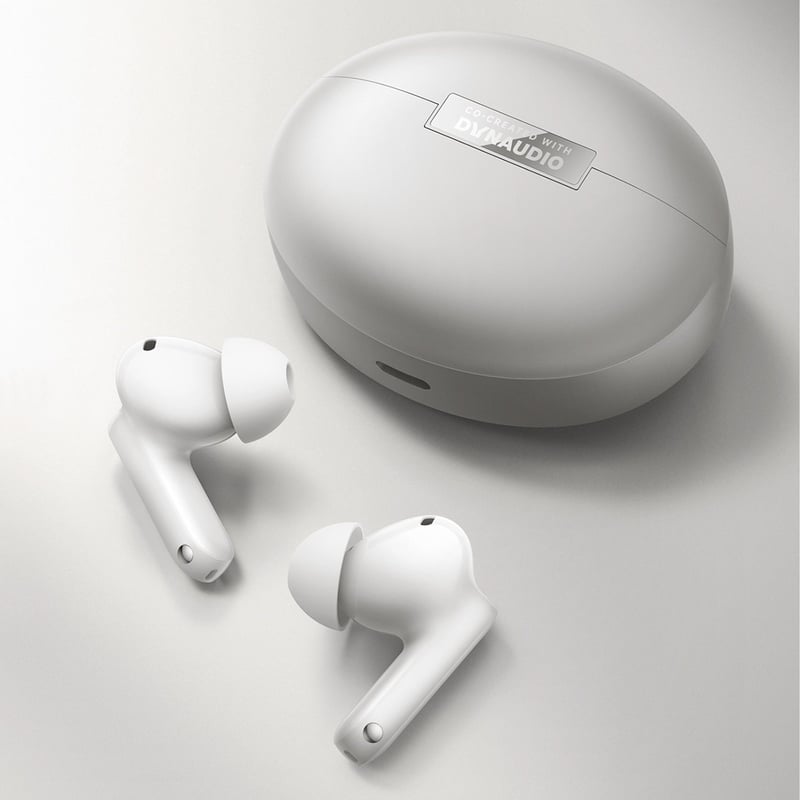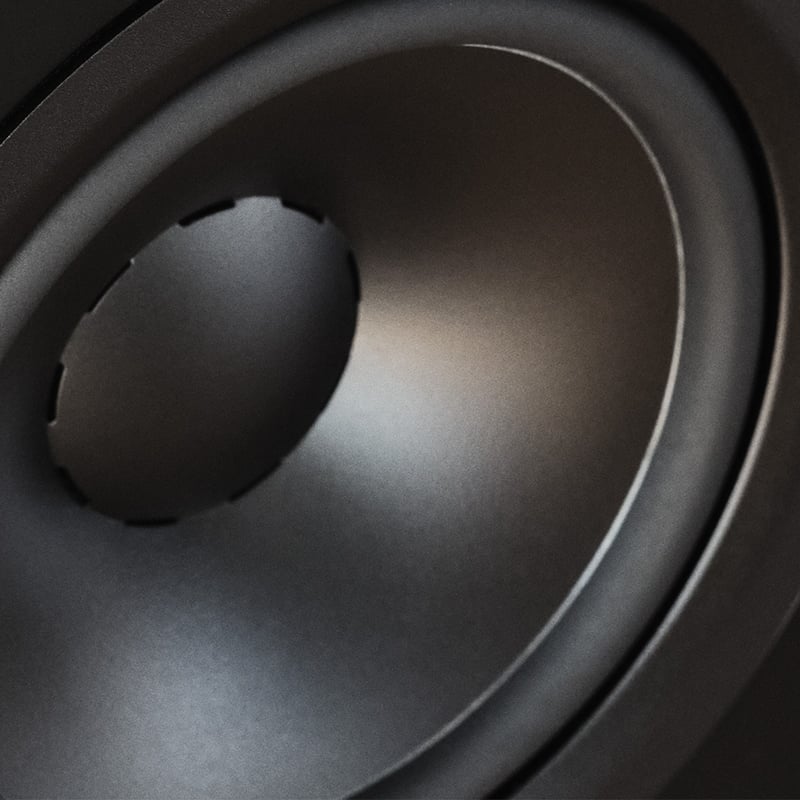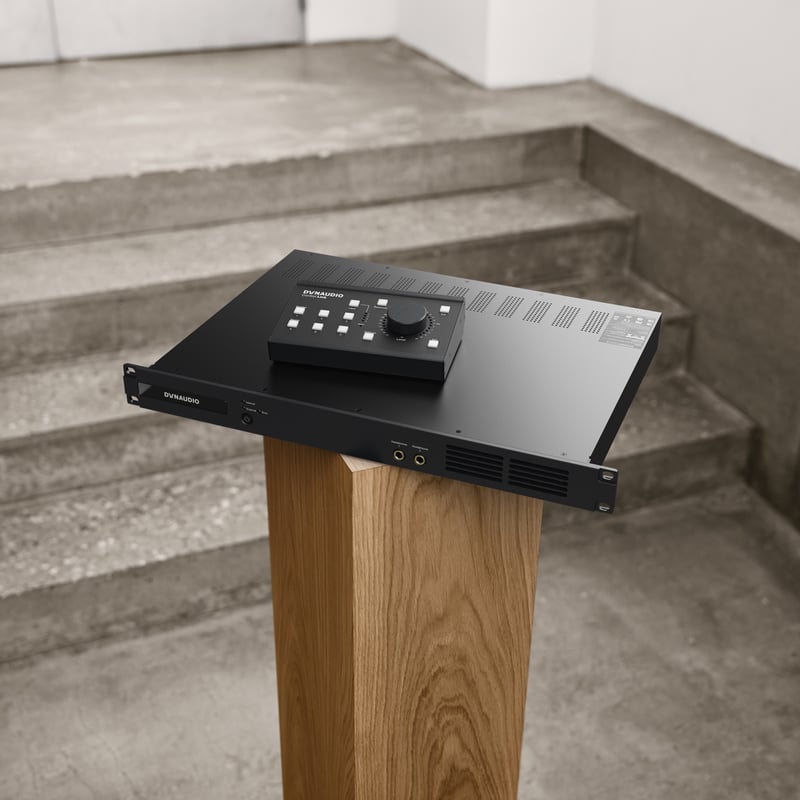Most discussions about metal concern Black Sabbath vs Judas Priest, or David Lee Roth vs Sammy Hagar. Step into Dynaudio Labs and, alongside those two perennially raging debates, you’ll hear another (perhaps more relevant) one: aluminium vs copper for voice-coils.
And in this, at least, everyone is on the same side: the best one is the one that’s best for the job. That’s why Evoke uses both for its woofers and midrange drivers.
How to build a loudspeaker
If you think back to your school physics lessons, you’ll remember that if you pass an electric current through a coil of wire surrounded by a magnetic field, that coil will move. Connect the coil to the back of a cone and make the electric current come from an amplifier in the form of a musical signal, and you’ve just built a loudspeaker motor.
Traditionally, Dynaudio engineers have favoured aluminium wire for our speakers’ voice-coils. It’s extremely light, which means it’s possible to use more windings for a given total weight. More windings gives finer control over the cone’s movement, which means its sound can be manipulated in different ways at high volumes and high frequencies.
While all Evoke speakers share the same Cerotar tweeter – an original design, which you can read about here – their woofers differ in the wire they use for their voice-coils. Why? Because each speaker is unique, and needs to be designed individually for optimum performance.
The Evoke’s woofers all have diaphragms made from MSP (Magnesium Silicate Polymer), a proprietary material formulated, refined and developed by Dynaudio over the past four decades. MSP provides exactly the right combination of lightness, stiffness and damping for the most faithful sound reproduction.
But behind the cones, there are all sorts of exciting things happening – including some direct trickle-down technology straight from the high-end Contour series, Special Forty and the Confidence range…
Which speaker uses what?
Let’s start with Evoke 50, the large floorstander and flagship of the range. Its dedicated 15cm midrange driver is based heavily on technology from Dynaudio’s high-end Contour range. It uses a wafer-thin 0.4mm diaphragm and a neodymium, rather than Ferrite+, magnet – and it uses aluminium in its 38mm voice-coil. That means extremely low weight and incredibly fleet-footed performance.
Why neodymium? It’s all a question of flux; magnetic energy. The more magnetic flux you have, the more detailed the midrange becomes because it helps the super-sensitive voice-coil take advantage of vanishingly small signals and convert them into vanishingly small driver movements… detail, in other words.
But its 18cm woofers use 52mm copper voice-coils and ferrite+ strontium carbonate magnet systems instead. That’s because they have one job: delivering bass. Copper is heavier and gives more moving mass; Evoke 50’s full-on bass drivers need a low resonance frequency and more mass – and where better to add that than in the coil, where it has the added benefit of improved sensitivity?
Evoke 30, with its twin 14cm woofers, takes a slightly different direction. It uses aluminium in its 52mm voice-coils. That’s because the lower woofer works in parallel with the upper one, but cuts out at a lower frequency to reinforce bass performance.
The 52mm aluminium voice-coil at the heart of Evoke 20’s 18cm woofer was paired with a Ferrite+ magnet because it needs to provide finessed midrange as well as the weight required to reproduce the level of bass listeners expect from a large standmount speaker. Evoke 10, likewise, uses a 14cm diaphragm, a 28mm aluminium voice-coil and a Ferrite+ magnet for the same reasons. And Evoke 25C, the centre-channel, has dual 14cm, 38mm aluminium drivers. You can see, then, how everything is precisely tuned for its individual speaker. It’s a long job. And it hasn’t been without controversy.
The big decision
Using copper was new for Dynaudio, and it was a huge step to make after exclusively using aluminium in our hi-fi speakers for so long. It wasn’t a knee-jerk decision, or one driven by marketing. It was driven purely by science… and ears. We spent many months researching, measuring (for more about how we do that, click here) and, most importantly, listening to aluminium and copper voice-coils in a variety of configurations.
We’d already been experimenting with copper on the Confidence series. So we took those lessons and discovered that, for certain drivers, we preferred the sound of a copper coil with a thinner diaphragm than an aluminium one with a thicker cone. Both had identical moving masses; the numbers were the same on paper. But our ears had the final say.
In the end, it’s all about balance. It’s about optimising a driver for its particular purpose to get the very best performance from it. So, when we’re asked whether we use aluminium or copper in our drivers, the answer is, simply, “yes”.
(Oh. It’s Sabbath and Roth, by the way.)
Sign up to get more great articles
Nothing compares to the satisfaction of knowing – for a fact – that something is as good as it gets





